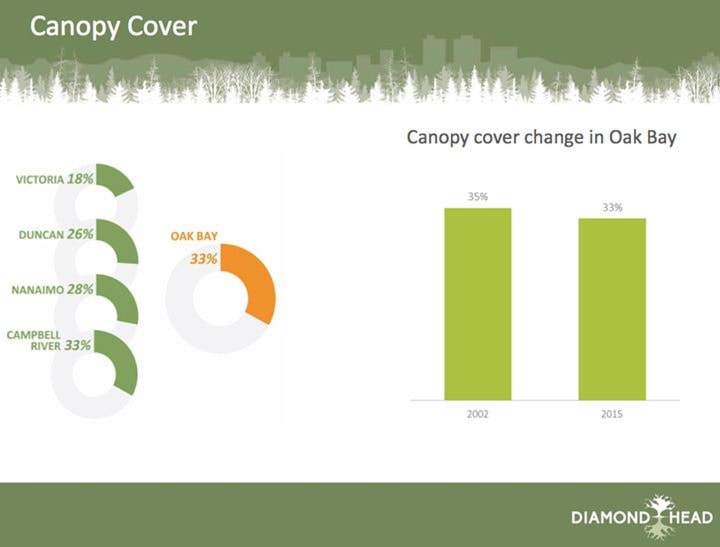Oak Bay’s tree bylaw bared its teeth even as civic leaders and the community perused a draft report on improving tree protection.
Oak Bay announced this morning that two people pleaded guilty in the removal of a large blue atlas cedar on Cavendish Road in November 2015. The two were fined $30,000 total.
“This is a good day for trees in Oak Bay,” said Mayor Nils Jensen. “While we can’t replace the beautiful tree that was illegally removed this significant fine sends a strong message that the illegal removal of trees will not be tolerated.”
The district advises those contemplating the removal of trees to contact the municipality in advance of any removals to determine if permits are required.
“While we can’t replace this tree, this does send a very strong message that we take illegal removal of trees very seriously,” Jensen said, adding it underscores their commitment to the urban forest and the court finding sends a “very strong message.”
Part of the commitment is development of an Urban Forest Strategy. Thursday night, the community saw a draft report from Diamond Head Consulting that featured 30-plus recommendations including a target of “approaching 40 per cent” tree canopy in the community by 2045. Oak Bay is currently at 33 per cent according to Diamond Head, hired to develop the strategy, who also found that’s about a two per cent loss of canopy since 2002.
bjectives would include supporting a healthy, well adapted and diverse tree population, managing the urban forest for community climate change adaptation, strengthening natural heritage to support health ecological systems and biodiversity and engaging with community to build stewardship of the urban forest.
The largest concern voiced by the public was simply time. About 40 people heard the more than two-hour presentation and discussion at Sports View Lounge at Oak Bay Recreation Centre. Many wanted more time as the report was to be presented Friday morning at 9 a.m. to Oak Bay’s committee of the whole and Parks, Recreation and Culture Commission.
They’ll get that time as Diamond Head plans to incorporate information gathered at both meetings and expects to bring a draft back to the PRCC before coming back to council or committee.
One area of contention was the assertion the pace of development is picking up in Oak Bay. The current tree bylaw allows for tree removal in a building footprint without replacement.
“New buildings should only use land not being used by big good trees,” one audience member said, to applause.
“Trees are now starting to be viewed as a community amenity, regardless of whether they’re on private or public property,” said Trevor Cox of Diamond Head.
That balance of private property versus community value is something that will require thought, Jensen agreed during the Friday morning presentation at municipal hall. The report shows established neighbourhood areas account for about 28 per cent of the canopy raising the concern of balance over private property. Part of the recommended approach to target 40 per cent by 2045 includes increasing established neighbourhood canopy from the current 28 per cent to 35 per cent, which equates to 3,700 medium trees planted on private property.
Coun. Tom Croft suggested the report expand on what that might look like for a homeowner who does renovations or builds.
Other input included concern voiced by the committee and PRCC was that estimated staff time required to implement some of the recommendations were shy of what would actually be needed.
Coun. Kevin Murdoch suggested the executive summary could reflect the recommendations more directly. He also suggested they touch on agriculture, both fruit trees and the need for light on other food gardens.
Coun. Tara Ney was the first, echoed later, to voice pleasure they went down the consultant path, noting early discussions suggested adapting one from another community or having volunteers prepare an Urban Forest Strategy. “It is very much tailored to our community,” she said.
Jensen introduced an elephant to the room as the meeting neared its natural end. How do you eat an elephant? One piece at a time.
“It would be helpful to show a staged approach,” he suggested. “We have all kinds of challenges with our infrastructure we know that,” he said.
